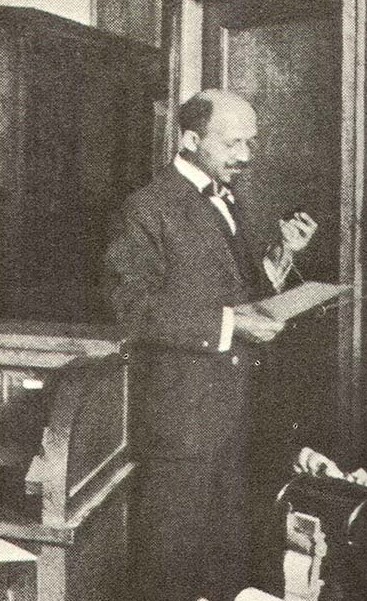
Now and Today, September 8, 2020
The numbers of coronavirus are sobering but not awful. They’re far more than we’d ever want but slowly going downward, the absolute right direction. Those of us with anyone of a school age—from pre-school to graduate school—can describe the disruptions to daily life and near-term future of a pandemic in Wave Two. That’s a feeling and a fact of living even though it’s not a number and a fact of science. Worse, we know somewhere out there are times and events in the weeks ahead where people will simply continue to chew each other’s bones. It’s in the air.
**************************************************
Then, September 8, 1918
There’s a lot to sort out today in the air of Chicago, Illinois. There’s the usual excitement and energy, the sense of people hard at work or hard at having a good time. There’s the noise thousands of people jostling against each other, the aroma of Lake Michigan and scores of factories and stockyards. Like any other day.
On the far northern edge of the city a few American sailors step off a large boat. They’re training to fight the naval side of the World War. Among them are a handful of men who feel horribly with aches, fever, coughs. With luck they’ll feel better tomorrow or the day after and, then, will return to another ordinary day next to Lake Michigan and the big city.
Chicago has another condition that’s in the air, too. It’s visible and knowable. It affects more things than a person can count. It’s definable, so much so that one of the city’s most well-known newspaper reporters, Henry M. Hyde, has written an unforgettable article about it in a city newspaper a few weeks back. Hyde didn’t invent it, he just framed the thing into words and slapped a blazing headline on top.
“Half A Million Darkies From Dixie Swarm To The North To Better Themselves.”
Hyde blasts his readers with a relentless tone. He attributes just about anything threatening, anything worrisome, anything negative, anything troubling to Black men, women, and children. They are, simply, The Others whose ways and manners will afflict Chicago and every other community north of the Ohio River in which they choose to live. Prepare yourselves, Hyde intones to his white readers, because the effect is real.
An existing Black population of 40,000 had nearly doubled in the past three years. Hyde was helping to make Chicago hostile to them.
Black leaders like W.E.B. Du Bois track this northern movement. He’s all too aware of people like Hyde who demand practices and attitudes that perpetuate anti-Black opinions. Du Bois hopes the event embodied by those American sailors north of the city—the World War—will show white Americans that Blacks are their equal in patriotism, commitment, and service. And in every other way, too. Du Bois believes this is the chance to silence Hyde and his readers.
But some of those American sailors weren’t in a condition to do much of anything. They are too busy coughing, sweating, aching.
So in the air, along with so much else, were these two things—the sounds of a few unhealthy men and the signs of a strangely unhealthy community. For those involved separately on either part, life ahead looks hard. But if they collide, hard takes on a new meaning.
****************************************************
Looking Ahead From Today, September 8, 2020
Collision of different forces, of different trends or events, it’s difficult to distinguish between various things when all of it seems and feels mashed and mucked together. Why bother sorting the streams or counting the drops? You’re just trying not to drown.
But the truth is that the separation can help with gradation, with finding and fixing on the appropriate levels of response. If you can keep your mind flexible enough to bend here, stretch there, you can increase your chances of keeping perspective, holding insight, and elevating rational thought. Recognize that the collision of two different forces can make for an entirely worse result. Recognize, too, that the presence of two different forces before collision occurs will justify no delay in offering improvements, advancements, and progress.
*************************************************
For Those Wanting To Bridge 2020 And 1918, A Reminder…
Warfluenza and Warcorona.
Warfluenza is what Americans experienced in 1918 when influenza interacted with their dominant issue and concern of the day, World War One. The illness comes to them through their handling of and coping with World War One. That’s why I want you to think of it as Warfluenza. The pandemic and the issue affect each other.
Warcorona is what Americans are experienced in 2020 when coronavirus interacts with our dominant issue and concern of the day, World War Trump. Regardless of whether you love or hate Trump, Trumpism, and the Trump Presidency, it blends with the illness and thus we handle and cope with both together, inseparable. It’s Warfluenza updated to our world—Warcorona.
I want to reintroduce you to the world of Warfluenza’s Wave Two because we’re in Warcorona’s Wave Two right now. We’re following Warfluenza and Warcorona on exactly the same days across 102 years. Mark Twain is supposed to have said that history doesn’t repeat but it sure does rhyme. Count me as a “yes” to that statement.
As always, I invite you to reach out to me. Leave a comment here, email at dan@historicalsolutions, or text at 317-407-3687.







